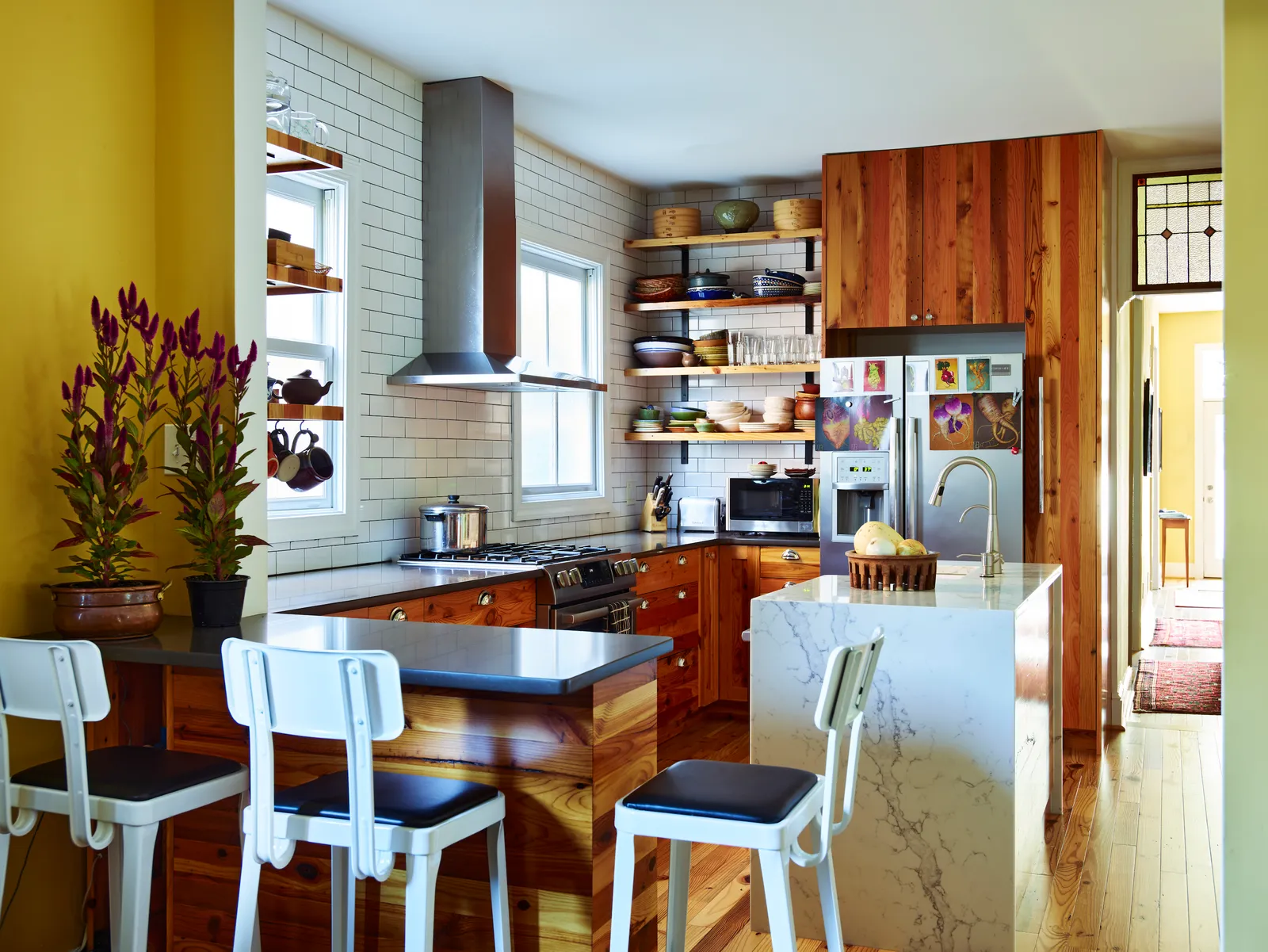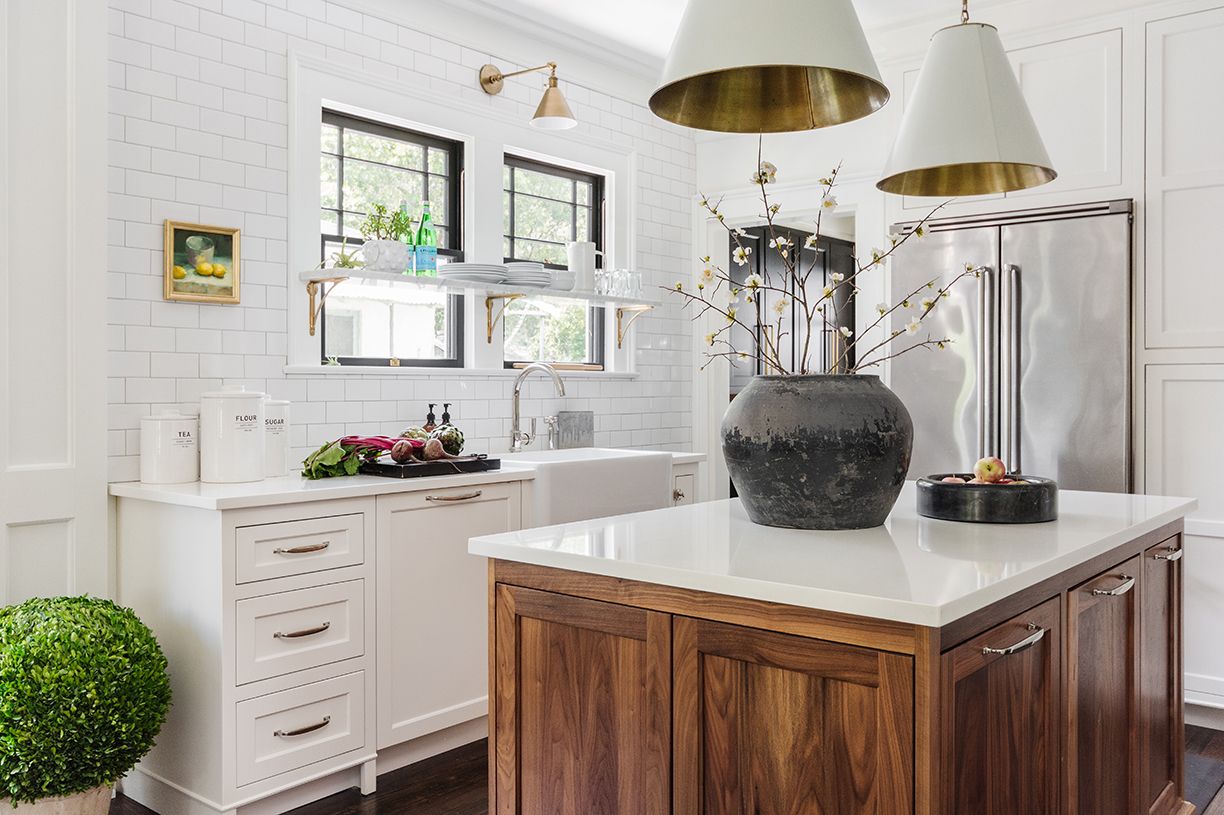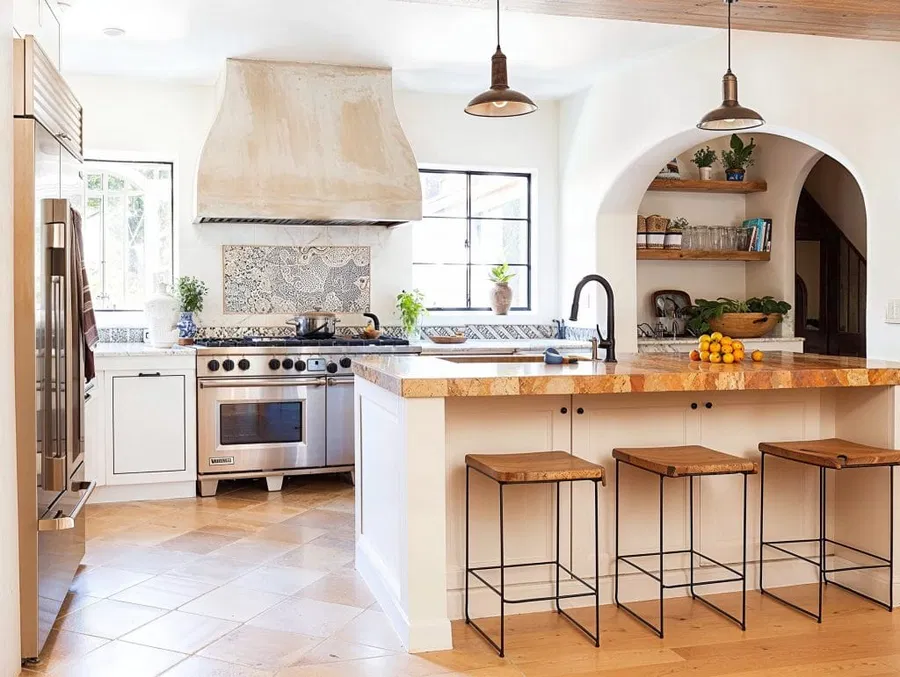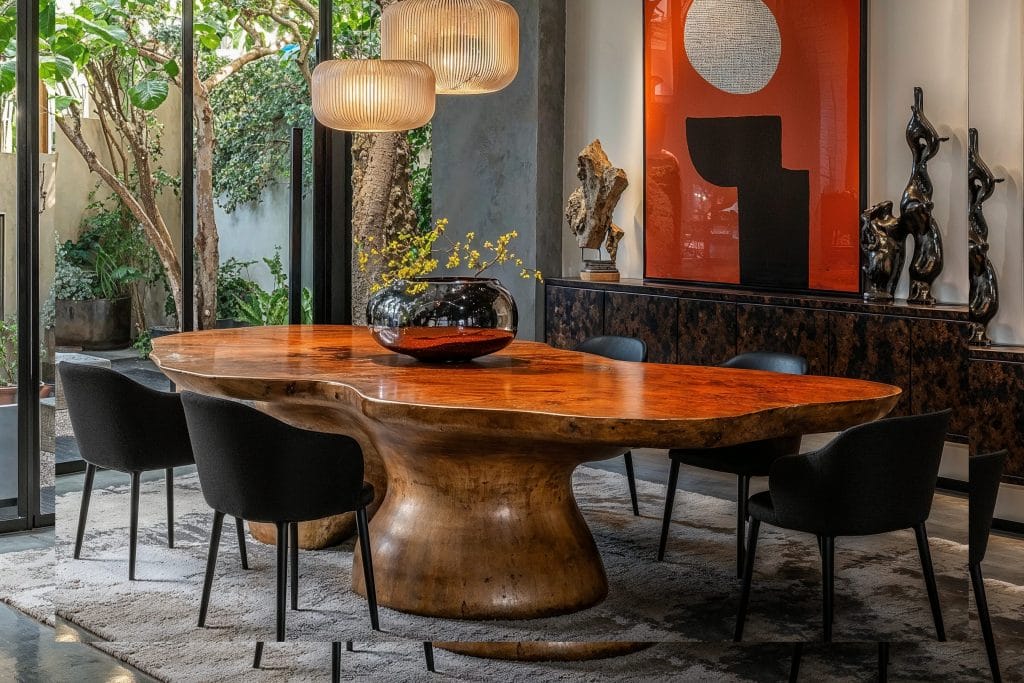“Timeless Elegance: How to Create a Stylish and Functional Kitchen & Dining Space That Elevates Your Home Decor”
Introduction: Why Kitchen & Dining Spaces Deserve More Than Just Function
In modern homes, the kitchen & dining area is no longer just a place to prepare and consume meals. It’s where memories are made, laughter is shared, and style makes a statement. These spaces are now deeply tied to your overall home decor, expressing personality, lifestyle, and even values.
Yet too many homeowners fall into one of two traps:
-
Prioritizing only functionality, resulting in sterile, uninspiring spaces.
-
Focusing solely on aesthetics, sacrificing usability.
In this three-part series, we’ll show you how to balance elegance and practicality, creating a Kitchen & Dining area that seamlessly complements your home decor while serving every modern need.
The New Role of Kitchen & Dining in Contemporary Home Decor
1. The Kitchen as a Social Hub
The open-concept kitchen revolutionized the way we live. What was once a backroom is now center stage — visible from the living room, dining area, and often the entryway.
Key design insight: Your kitchen is no longer hidden. It must reflect and enhance your home’s overall decor.
“A well-designed kitchen integrates into the home like a beautiful piece of furniture.” — Marissa Leigh, Interior Designer
Design tip: Use materials and colors that flow with your home’s aesthetic. A kitchen island in natural oak or cabinet fronts that match nearby walls creates visual harmony.
2. Dining Spaces as Identity Statements
Dining rooms have transformed from formal, unused zones into flexible spaces — areas where people eat, work, entertain, and connect. Whether it’s a banquette, a farmhouse table, or a marble bistro set, your dining area speaks volumes about your style.
Modern Home Decor Trends in Dining Spaces (2025):
-
Soft lighting (pendant lamps or wall sconces)
-
Warm neutrals and natural textures
-
Statement art or large mirrors
-
Mixed seating (benches + chairs)
These aren’t just design fads — they’re expressions of comfort, warmth, and individuality, key components of human-centered home decor.

Maximizing Small Kitchen & Dining Spaces Without Sacrificing Style
Design Principles That Unite Kitchen & Dining Spaces
To make your Kitchen & Dining feel unified and intentional, follow these core principles:
1. Material Continuity
Use the same or complementary:
-
Countertops and tabletops
-
Cabinet and furniture finishes
-
Hardware and light fixtures
This creates a sense of cohesion, which is central to effective home decor.
2. Lighting Layers
-
Task lighting for the kitchen (under-cabinet LEDs, pendant lights above islands)
-
Ambient lighting for dining (dimmers, chandeliers, candlelight)
-
Accent lighting to highlight decor (e.g., over floating shelves or art)
Pro tip: “Light defines mood — and in dining spaces, mood is everything.” — Ava Greene, Lighting Consultant
3. Space Zoning
Open-concept layouts must clearly separate functions while maintaining unity. Use:
-
Rugs to define dining zones
-
Islands or half-walls to transition between prep and eating areas
-
Color-blocking to subtly shift visual focus
Table: Top 5 Features That Blend Form and Function in Kitchen & Dining Spaces
| Feature | Functional Role | Decorative Value |
|---|---|---|
| Kitchen Island with Storage | Adds prep surface + cabinets | Can serve as visual centerpiece |
| Open Shelving | Keeps essentials accessible | Showcases ceramics, plants, or cookbooks |
| Statement Lighting | Illuminates tasks or meals | Adds sculptural elegance and warmth |
| Banquette Seating | Saves space, adds storage | Creates a cozy, casual vibe |
| Matching Wood Tones | Harmonizes kitchen and dining elements | Grounds the space with warmth and texture |
Color Psychology in Kitchen & Dining Home Decor
Kitchen Color Trends 2024–2025:
-
Sage green: Calming, modern, earthy
-
Deep navy: Sophisticated and timeless
-
Creamy white: Clean, expansive, classic
-
Charcoal gray: Neutral with boldness
Dining Room Color Accents:
-
Terracotta: Warm and grounded
-
Dusty rose: Soft, romantic energy
-
Mustard yellow: Invites optimism and appetite
Pro tip: Use color to define personality — it should reflect you more than Pinterest.

Maximizing Small Kitchen & Dining Spaces Without Sacrificing Style
Smart Functionality Trends in Kitchen & Dining
1. Integrated Technology
-
Smart faucets (touchless, filtered)
-
Wi-Fi enabled ovens with voice control
-
Lighting automation that dims based on the time of day
-
Smart fridges with internal cameras and inventory tracking
These tools support a modern lifestyle while keeping your space sleek and clutter-free, perfectly aligned with high-end home decor values.
2. Multi-Purpose Furniture
In urban homes or compact spaces, multifunctional furniture is key.
-
Extendable tables
-
Stools with hidden storage
-
Rolling kitchen carts that double as bar carts or sideboards
All of these choices enhance both usability and style, a win-win in any Kitchen & Dining setup.
3. Sustainable & Stylish Choices
Modern home decor is incomplete without a nod to sustainability:
-
Reclaimed wood dining tables
-
Bamboo utensils and organizers
-
Recycled glass countertops
-
Energy-efficient appliances
Sustainable design isn’t just responsible — it’s beautiful.
Maximizing Space: Layouts That Flow
Creating an elegant, functional Kitchen & Dining area starts with a thoughtful layout. Your space should be optimized for both comfort and efficiency, ensuring that every corner reflects your unique home decor style.
1. Open-Concept Layout: Merging Kitchen & Dining Seamlessly
The popularity of open-concept spaces has skyrocketed, and for good reason. Open-plan layouts create a feeling of airiness and cohesion between the kitchen and dining area.
Tips for Open-Concept Kitchens & Dining Areas:
-
Define zones with rugs: Use large, neutral area rugs to subtly separate the dining and cooking areas without blocking the flow.
-
Unified materials: Maintain a cohesive design language by choosing similar finishes for cabinets, furniture, and lighting throughout the kitchen and dining space.
-
Multi-functional islands: The kitchen island can double as a prep area, breakfast bar, or even an informal dining spot.
The goal is to create a space that’s inviting and practical, without sacrificing style. Combining elements from both the kitchen and dining areas into a single visual narrative ties your home decor together.

Maximizing Small Kitchen & Dining Spaces Without Sacrificing Style
2. The Work Triangle: A Classic Principle for Functionality
In kitchen design, the work triangle refers to the optimal positioning of the sink, stove, and refrigerator in a triangular layout. This principle is key to improving efficiency and minimizing unnecessary movement during meal prep.
Pro tip: If you have an open-concept layout, ensure that the work triangle in the kitchen flows into the dining space seamlessly, allowing for both beauty and practicality in the Kitchen & Dining area.
“Efficient kitchens don’t need to sacrifice style. With the right layout, function and elegance can coexist.” — Sophia Lark, Interior Architect
3. Compact and Modular Kitchens for Small Spaces
For smaller homes or apartments, modular kitchens offer an excellent solution to combine design and functionality in tight spaces. Opt for slim-profile cabinets, wall-mounted shelving, and integrated storage solutions to maximize your kitchen space while still maintaining elegance.
Features to incorporate:
-
Floating shelves for both storage and display
-
Compact, wall-mounted dining tables
-
Foldable chairs or stools that tuck away neatly
This approach ensures your Kitchen & Dining area remains both stylish and efficient, no matter the size of your space.
Dining Table Selection: Finding the Perfect Fit for Your Home Decor
The dining table is often the heart of your Kitchen & Dining space. It’s where you gather with loved ones, share meals, and create memories. Choosing the right table is crucial to enhancing both functionality and beauty.
1. Size and Shape: Matching Your Space
The size and shape of your dining table should be dictated by the size of your dining area. Here are some key considerations:
-
Round tables: Ideal for smaller spaces and fostering a more intimate atmosphere.
-
Rectangular tables: Great for larger families or gatherings, providing ample space for seating.
-
Extendable tables: Perfect for those who host dinner parties but need the flexibility to adjust seating arrangements.
In terms of home decor, choose materials and finishes that blend with the overall aesthetic of your space. For instance, if your Kitchen & Dining area features natural wood tones, a reclaimed wood dining table can add warmth and texture to the room.
2. Material and Design Considerations
When selecting your dining table, think about the materials that best reflect your home decor style. Popular choices include:
-
Solid wood for a rustic, timeless look
-
Glass tops for a sleek, modern feel
-
Marble surfaces for luxury and sophistication
Consider the table’s function: Do you need it to be easy to clean, or is it meant to be a showpiece? Your choice will impact both the functionality and aesthetic of your Kitchen & Dining area.
Table: Essential Kitchen & Dining Design Elements for Maximum Style
| Design Element | Functional Benefit | Decorative Value |
|---|---|---|
| Open Shelving | Keeps kitchen essentials within easy reach | Showcases personal style with open storage options |
| Versatile Dining Furniture | Offers seating flexibility | Adds charm and warmth to the dining area |
| Integrated Lighting | Creates functional ambiance | Enhances the mood and aesthetic of the space |
| Statement Backsplashes | Protects walls from spills and heat | Adds texture, color, and personality to the kitchen |
| Sleek Countertops | Provides a durable, easy-to-clean surface | Adds a high-end touch to the kitchen’s look |
3. Multi-Functionality: Furniture That Works Hard
In today’s homes, every piece of furniture needs to work overtime. Multi-functional furniture in Kitchen & Dining areas can include:
-
Convertible kitchen islands that turn into dining tables
-
Storage benches that provide both seating and hidden storage
-
Expandable tables that can grow to accommodate larger groups
This flexibility allows your home decor to evolve with your lifestyle, ensuring that every piece is both practical and aesthetically pleasing.
Color and Texture: Enhancing Your Kitchen & Dining Space
1. Harmonizing with Existing Home Decor
Choosing colors that complement your existing home decor is crucial in achieving a cohesive and sophisticated Kitchen & Dining area. Stick to a balanced color palette with neutral tones as your base, adding accents in bold, rich colors such as deep blues, earthy greens, or warm golds.
Pro tip: Texture is equally important. Combine matte finishes for countertops with glossy backsplashes and soft-textured upholstery on dining chairs for a contrast that enhances depth and interest.
2. Mixing Modern and Traditional Elements
One of the most exciting design trends in Kitchen & Dining is blending modern and traditional elements. A sleek, contemporary kitchen island can sit next to a vintage-inspired dining table, creating a balanced space that feels both fresh and timeless.
Choosing Appliances: Style Meets Functionality
When it comes to designing a stylish and functional Kitchen & Dining space, appliances play a key role. They need to integrate seamlessly into your design while enhancing your space’s home decor and overall functionality.
1. Seamless Integration with Your Kitchen Design
In modern kitchens, appliances are no longer mere tools; they’re part of the design narrative. Integrated appliances (such as built-in refrigerators, ovens, and dishwashers) are perfect for achieving a streamlined look that complements your home decor.
Key Tips for Choosing Appliances:
-
Opt for sleek, stainless steel finishes for a contemporary vibe, or matte black for a more sophisticated, minimalist approach.
-
Choose energy-efficient models to reduce your carbon footprint and energy bills without compromising on performance.
-
Select smart appliances that offer features like voice control, touch-screen interfaces, and Wi-Fi connectivity to elevate your kitchen’s functionality.
“Appliances are more than just functional elements; they’re an essential part of your kitchen’s style.” — Samantha Williams, Interior Designer
2. Smart Technology for the Modern Home
Integrating smart technology into your Kitchen & Dining area not only enhances the functionality of your space but also brings it into the future. Smart ovens, refrigerators, and dishwashers with app-based controls can make meal prep more efficient, help you monitor energy usage, and even suggest recipes based on your available ingredients.
Consider these innovations:
-
Smart refrigerators that track your groceries and suggest shopping lists.
-
Voice-controlled lighting and temperature adjustments, perfect for creating the ideal ambiance while cooking or dining.
-
Automated cooking appliances, such as induction cooktops with precise temperature control.
With home decor in mind, these technological advancements should blend into your design, offering both modernity and practicality.
Sustainability: Designing for a Greener Future
As sustainability becomes a central concern in modern design, it’s important to consider eco-friendly options in your Kitchen & Dining space. Sustainable design is about more than just energy-efficient appliances; it involves choosing materials, finishes, and designs that minimize your environmental impact.
1. Eco-Friendly Materials for Countertops and Cabinets
Sustainability starts with the materials you choose for your Kitchen & Dining space. Opt for recycled, reclaimed, or sustainably sourced materials that not only reduce your carbon footprint but also bring character and texture to your home decor.
Sustainable Material Ideas:
-
Bamboo is a fast-growing, renewable resource, ideal for countertops, cabinets, and flooring.
-
Recycled glass countertops provide a unique, eco-conscious alternative to traditional stone surfaces.
-
Reclaimed wood offers a rustic charm that’s perfect for cabinets, dining tables, or shelving.
By using these materials, you can create a stunning, eco-friendly Kitchen & Dining space that complements your home decor while contributing to a sustainable future.
2. Water and Energy Conservation
Energy and water efficiency are paramount in creating an environmentally responsible kitchen. Installing low-flow faucets, energy-efficient lighting, and high-efficiency dishwashers helps reduce your overall environmental impact while maintaining a stylish, functional space.
Sustainable Tips:
-
Install LED lighting for energy savings and longevity.
-
Choose low-energy appliances that carry an Energy Star certification.
-
Use reclaimed water systems or choose appliances that are specifically designed to minimize water consumption.
By incorporating these features into your Kitchen & Dining space, you’ll enhance your home decor with eco-friendly, efficient solutions that benefit both your home and the environment.
Final Touches: Elevating Your Space with Personal Style
Now that your Kitchen & Dining area is functional, stylish, and sustainable, it’s time to focus on the final touches. These small details make a big difference in transforming your space into a personalized reflection of your unique home decor style.
1. Statement Lighting: Setting the Mood
Lighting is crucial in any Kitchen & Dining area. Whether you’re hosting dinner parties or enjoying a quiet meal, the right lighting can set the mood and highlight your design features.
-
Pendant lights above the dining table or kitchen island can provide both focused task lighting and a decorative element.
-
Under-cabinet lighting not only makes food prep easier but also creates a soft ambiance that complements your home decor.
-
Consider chandeliers or statement light fixtures that draw attention to the central focal points in your Kitchen & Dining space.
2. Personal Accessories: The Finishing Touch
The beauty of home decor is in the details. Add a personal touch to your Kitchen & Dining area with carefully curated accessories such as:
-
Handcrafted pottery or vases on the dining table.
-
Unique placemats or table runners to complement your table setting.
-
Decorative bowls or trays on countertops to organize and beautify the space.
These final touches add depth, warmth, and personality, making your Kitchen & Dining area feel like a true extension of your lifestyle and taste.
3. Creating a Seamless Transition Between the Kitchen & Dining Area
Lastly, it’s essential to create a natural flow between the kitchen and dining space. Consider these strategies:
-
Use consistent flooring throughout both areas to create a cohesive visual transition.
-
Architectural features, like open shelving or partitioned walls, can subtly separate the two spaces while maintaining a sense of openness.
-
Choose furniture that complements both areas, such as dining chairs that echo the style of your kitchen seating.
Conclusion: The Perfect Kitchen & Dining Space
Creating the perfect Kitchen & Dining area that blends functionality with timeless elegance is achievable with careful planning and attention to detail. By integrating smart appliances, sustainable materials, and stylish furniture, you can craft a space that’s not only efficient but also an expression of your unique home decor.
Remember, the key to a successful Kitchen & Dining design lies in balancing form with function — ensuring that every element, from layout to lighting, enhances both your everyday life and your overall aesthetic.
FAQ: Common Kitchen & Dining Design Questions
Q: How do I ensure my Kitchen & Dining area is both functional and stylish?
A: Start with an efficient layout, use integrated appliances, and select materials that suit your home decor style. Don’t forget to incorporate smart technology and sustainable options to keep your space both beautiful and eco-friendly.
Q: What is the best way to create an open-concept Kitchen & Dining area?
A: Use furniture and design elements that define spaces without creating barriers. Consider a unified color palette, complementary materials, and flexible furniture options to create a seamless flow.
Q: How can I make my kitchen more sustainable?
A: Opt for eco-friendly materials like bamboo, recycled glass, and reclaimed wood. Install energy-efficient appliances and water-saving fixtures to minimize your environmental impact.
Watch the video below to explore the latest Kitchen & Dining trends and design tips for your home.
Additional Tips for Maintaining Your Kitchen & Dining Area
While designing and setting up your Kitchen & Dining space is essential, maintaining its beauty and functionality is just as important. Here are some additional tips to help keep your home decor and kitchen appliances in top shape:
1. Regular Cleaning and Maintenance
To preserve the elegance of your Kitchen & Dining space, regular cleaning is essential. Clean your countertops daily, wipe down your appliances, and keep your dining area free of clutter. Additionally, ensure that your smart appliances are updated to benefit from the latest features and efficiency improvements.
2. Refresh Your Space with Seasonal Touches
To keep your home decor feeling fresh, consider swapping out decor elements seasonally. Introduce fresh flowers or seasonal table settings that add variety without overwhelming the overall design. During winter, you could bring in cozy textiles, while spring and summer might call for vibrant tableware and colorful accents.
3. Use Multi-Functional Furniture
If your kitchen and dining area are compact, consider investing in multi-functional furniture. A dining table with built-in storage, or stools that can be tucked away when not in use, helps save space while keeping your home decor practical and stylish.
These additional touches will help you maintain a beautiful and functional Kitchen & Dining area, ensuring that it remains a perfect reflection of your style and needs over time.


